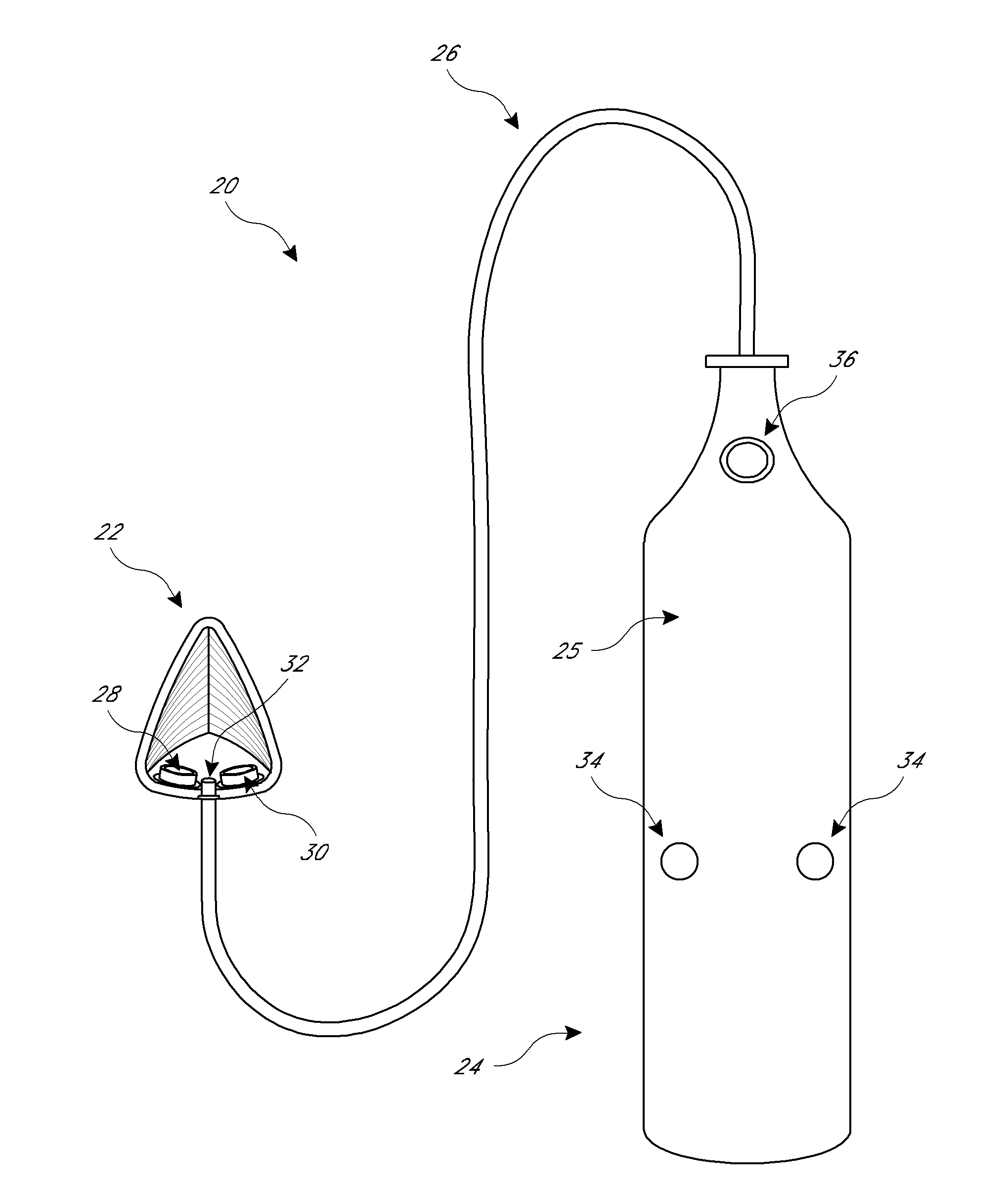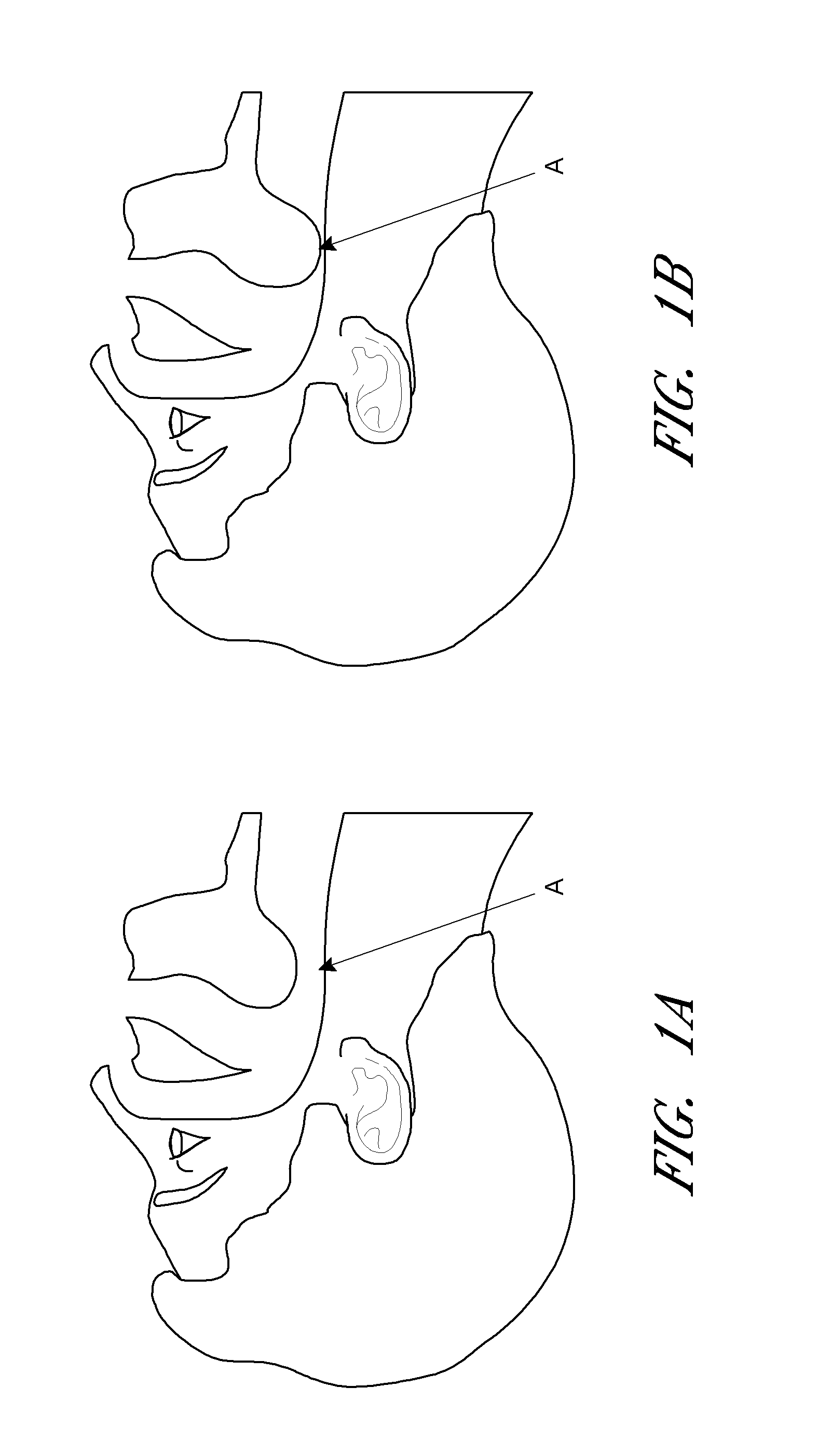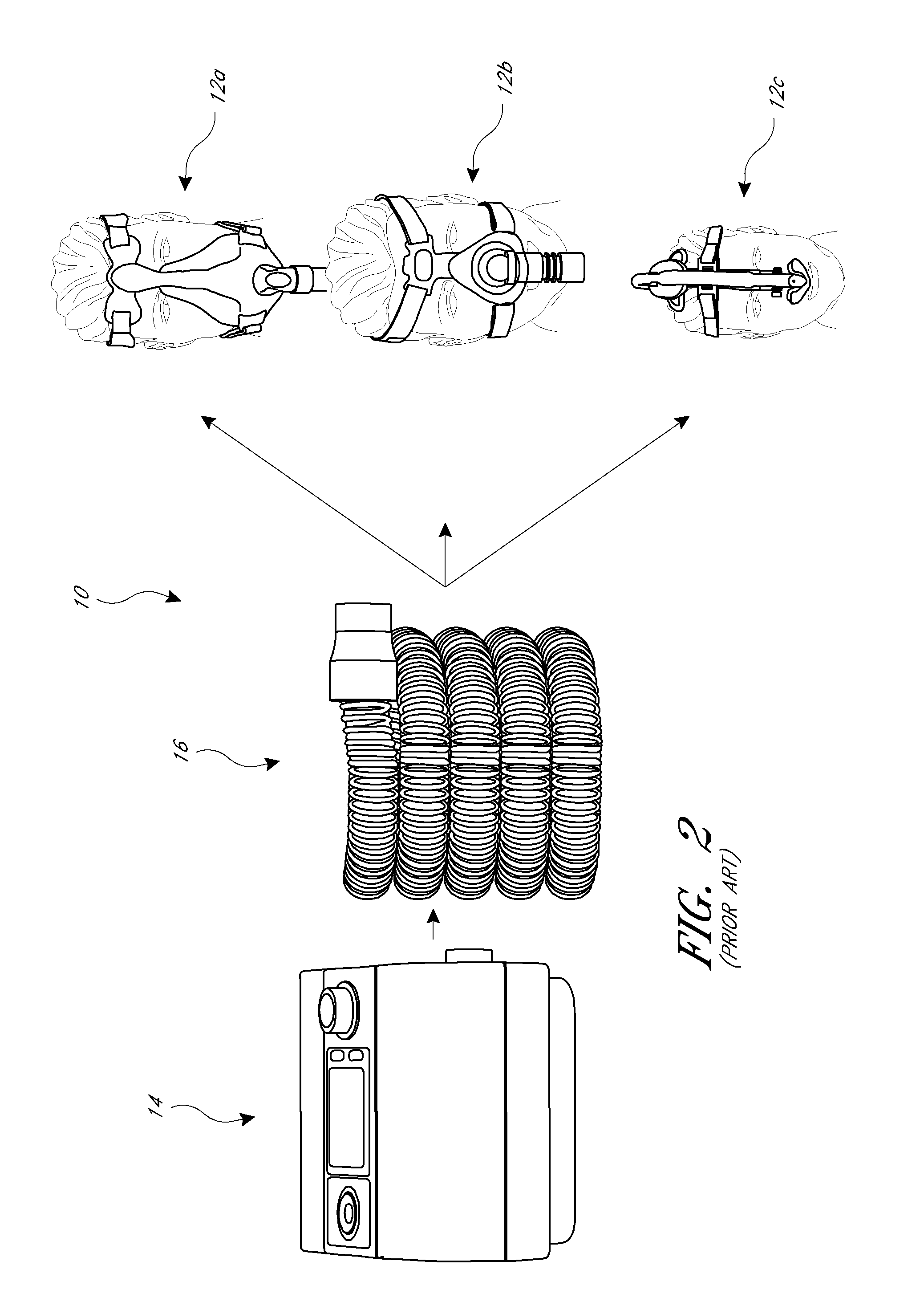Auto-feedback valve for a sleep apnea device
a technology of sleep apnea and autofeedback valve, which is applied in the field of medical systems, devices and methods, can solve the problems of increasing the cost of sleep apnea treatment, unsatisfactory current treatment options, and irritability of people with sleep apnea, so as to reduce the risk of osa and improve the quality of life, the effect of reducing side effects
- Summary
- Abstract
- Description
- Claims
- Application Information
AI Technical Summary
Benefits of technology
Problems solved by technology
Method used
Image
Examples
example embodiments
[0500]The following example embodiments identify some possible permutations of combinations of features disclosed herein, although other permutations of combinations of features are also possible.
[0501]1. A device for treating a patient suffering from obstructive sleep apnea or snoring, the device comprising:
[0502]a manifold;
[0503]an expiratory valve connected to the manifold, the expiratory valve comprising a first end and a second end, the first end being closer to the patient when the patient is using the device, the expiratory valve further comprising:[0504]a body portion comprising a feedback port configured to be connected to an air flow generator;[0505]a plunger at least partially disposed in the body portion, the plunger comprising a first end and a second end, the first end being closer to the patient when the patient is using the device; and[0506]a pressurizing chamber positioned between the second end of the plunger and the second end of the expiratory valve, the pressuri...
PUM
| Property | Measurement | Unit |
|---|---|---|
| height | aaaaa | aaaaa |
| height | aaaaa | aaaaa |
| diameter | aaaaa | aaaaa |
Abstract
Description
Claims
Application Information
 Login to View More
Login to View More - R&D
- Intellectual Property
- Life Sciences
- Materials
- Tech Scout
- Unparalleled Data Quality
- Higher Quality Content
- 60% Fewer Hallucinations
Browse by: Latest US Patents, China's latest patents, Technical Efficacy Thesaurus, Application Domain, Technology Topic, Popular Technical Reports.
© 2025 PatSnap. All rights reserved.Legal|Privacy policy|Modern Slavery Act Transparency Statement|Sitemap|About US| Contact US: help@patsnap.com



